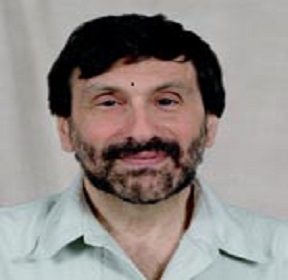
Emanuel Goldman
Rutgers-New Jersey Medical School USATitle: The mistaken belief that fomites play a significant role in transmission of respiratory viruses
Abstract:
For many decades, the scientific community has considered fomites (inanimate surfaces and objects) as significant vehicles for transmission of respiratory viruses. This presumption was the conventional wisdom when the COVID-19 pandemic began, and public health guidance led to a great deal of effort and expense in disinfecting fomites in public places as well as in private settings, including mail, packages, and products bought in stores, such as grocery stores. The scientific basis for this presumption for SARS-CoV-2 as well as almost all other respiratory viruses was the environmental survival of viable viruses on surfaces monitored over a period of time following inoculation of the surface. In July 2020, I published a Comment in Lancet Infectious Diseases challenging this presumption. The title of the Comment was "Exaggerated risk of transmission of COVID-19 by fomites". The crux of the argument was that the concentrations of virus used was way too high in experiments showing long survival of the virus on surfaces. Since the virus decays with a defined half-life, the more you start with, the more half-lives you have to go through before reaching an endpoint of less than one infectious virus particle on the surface. In other words, the experiments that were the basis for concern about fomite transmission of COVID-19 were unrelated to real-world conditions. It turns out to be even worse than I originally thought. Experiments from my lab recently published in Applied and Environmental Microbiology show that an enveloped virus, bacteriophage Phi6, protects itself from environmental decay at higher virus concentrations. Phi6 has been suggested for use as a non-pathogenic surrogate for SARS-CoV-2, which is also an enveloped virus. Therefore, the design flaw in experiments measuring surface survival of SARS-CoV-2 is not just that too much inoculum requires more half-lives to go through – the larger inoculums extend the half-lives as well. Results published in 2005 with the original SARSCoV- 1 confirm that larger inoculums extend environmental half-lives of the virus. The Lancet ID Comment was picked up by the press. A columnist from the Atlantic coined the term "hygiene theater" in an interview about the Lancet ID Comment. Other research corroborated the assertions in the Comment, and Nature posted an editorial citing the Lancet ID Comment, calling on Public Health agencies to emphasize aerosols and stop warning about fomites. Several months later, the United States CDC did just that, estimating the chance of transmission by fomites as less than 1 in 10,000. The lessons we have learned in the battles over COVID-19 transmission inform the direction the field should take when considering the transmission of other respiratory viruses. In almost all cases, the evidence supporting fomite transmission is based on the same kinds of artifactual experiments. A seminal paper almost 35 years ago demonstrated that rhinoviruses, the major cause of the common cold, are at least to a first approximation entirely transmitted by air and not fomites, a paper often overlooked in contemporary publications. Nevertheless, publications continue to appear promoting fomite transmission as a risk for SARS-CoV-2 and other respiratory viruses. This lecture describes why these publications should not raise concern over the possibility of fomite transmission in the real world.
Biography:
Emanuel Goldman graduated with honors from the Bronx High School of Science in 1962, received a B.A. cum laude from Brandeis University in 1966, where he was a chemistry major, and he completed his Ph.D. in Biochemistry at M.I.T. in 1972. He did postdoctoral research at Harvard Medical School and at the University of California, Irvine, before joining the faculty of New Jersey Medical School in 1979, where he rose through the ranks to Professor in 1993. Among his awards and honors, he was a Damon Runyon Fellow, A Lievre Senior Fellow of the California Division- American Cancer Society, and a recipient of a Research Career Development Award from the National Cancer Institute. Among his service activities, he was an officer and organizer of the NY-NJ Molecular Biology Club, served as a full member of an American Cancer Society Study Section, and continues to serve on the editorial boards of "Protein Expression and Purification", and "Applied and Environmental Microbiology". He was also twice elected by his colleagues to serve as President of the university chapter of the American Association of University Professors, and he was elected to serve as Vice President and subsequently President of the Faculty Organization of NJMS. He published a Comment in the Lancet in July 2020 that began the process of reversing the mistaken belief that COVID-19 was transmitted from surfaces.

